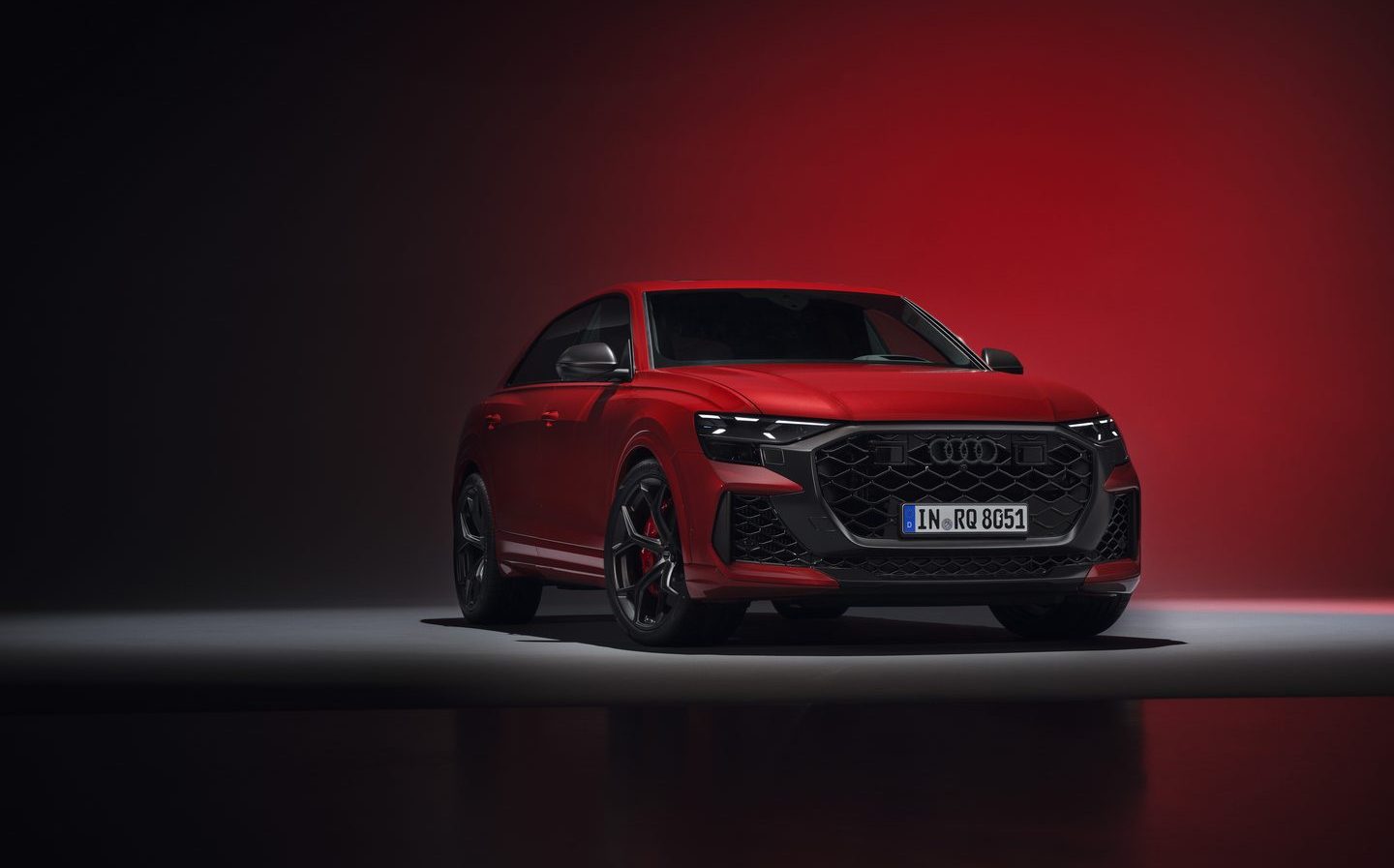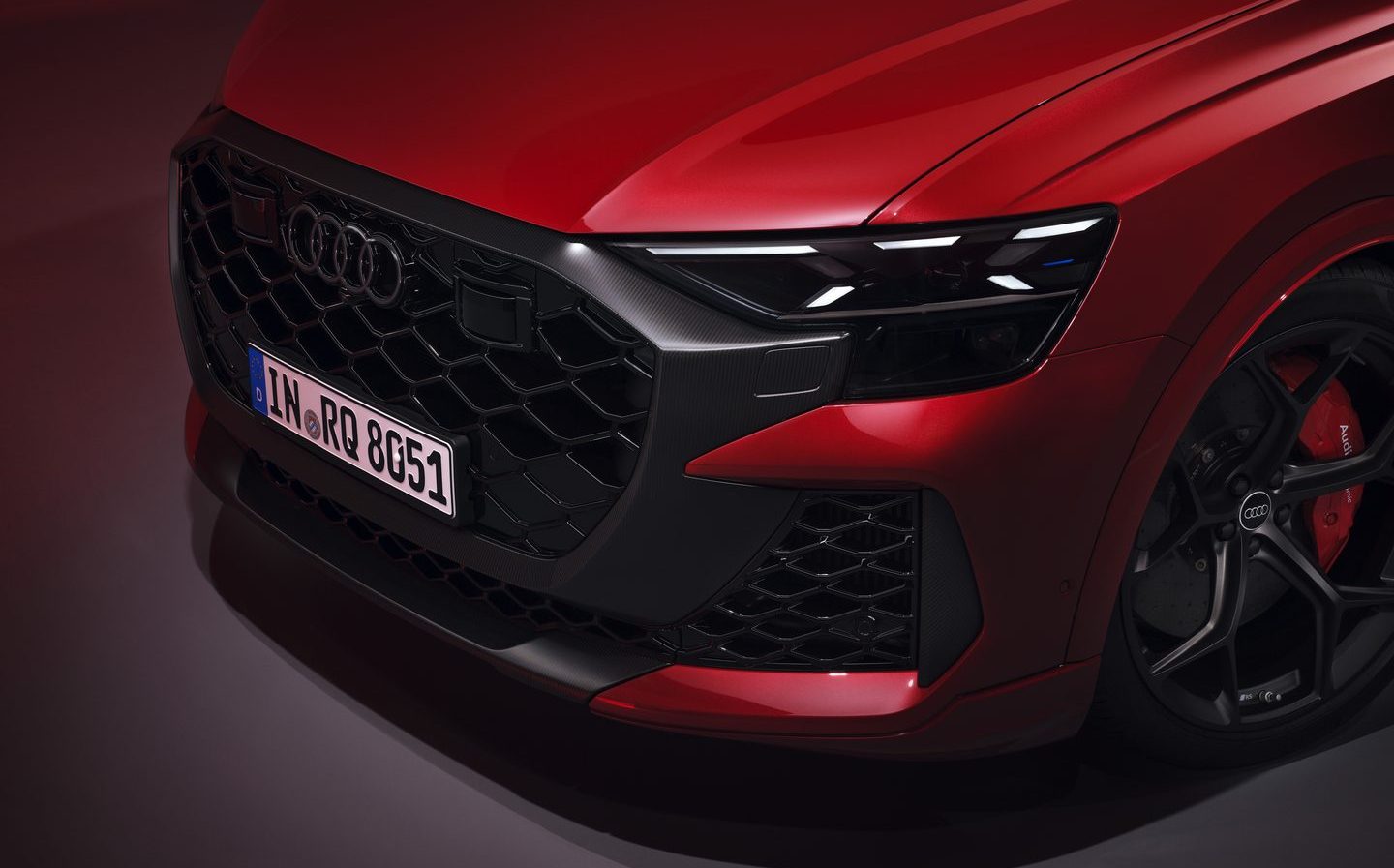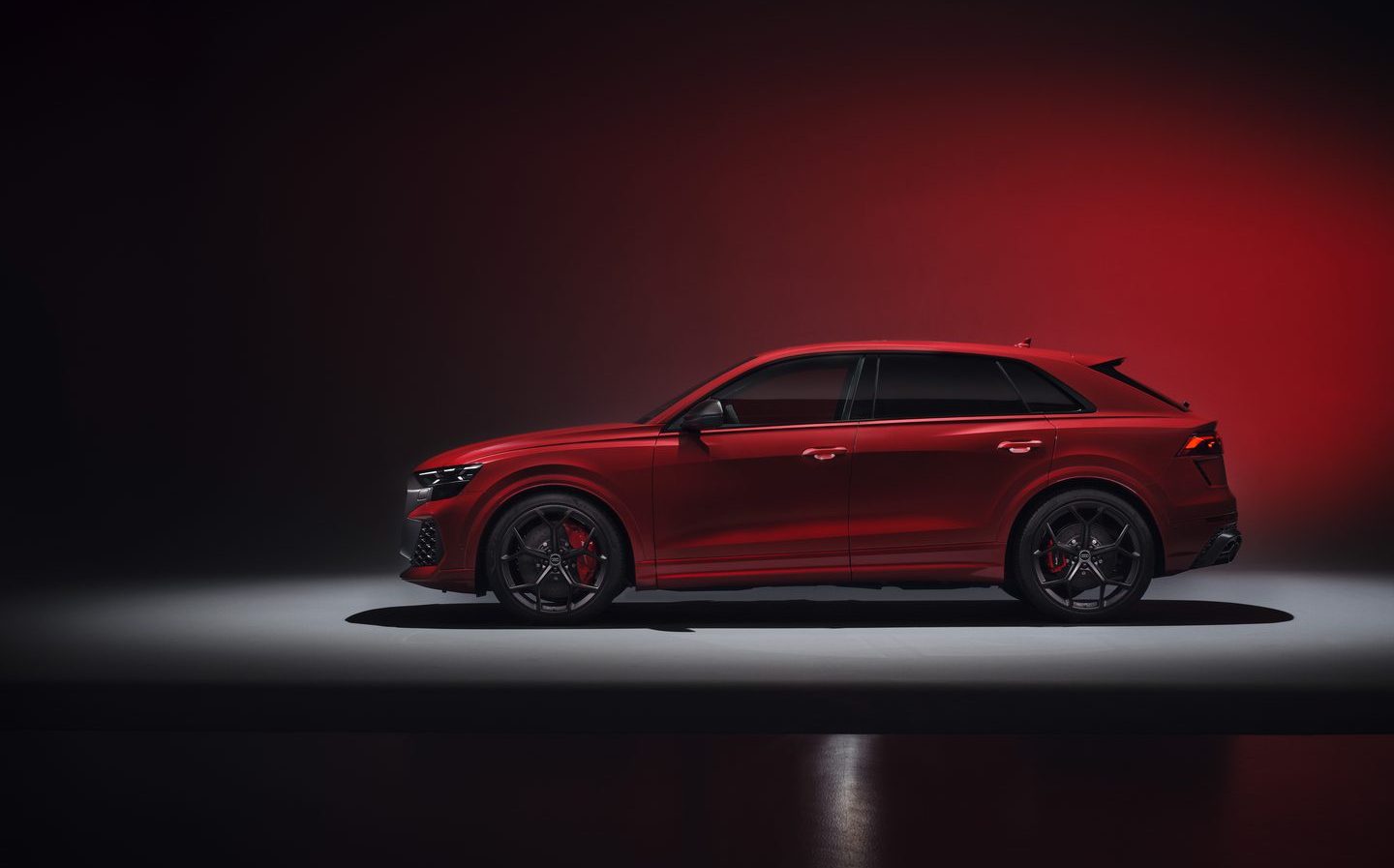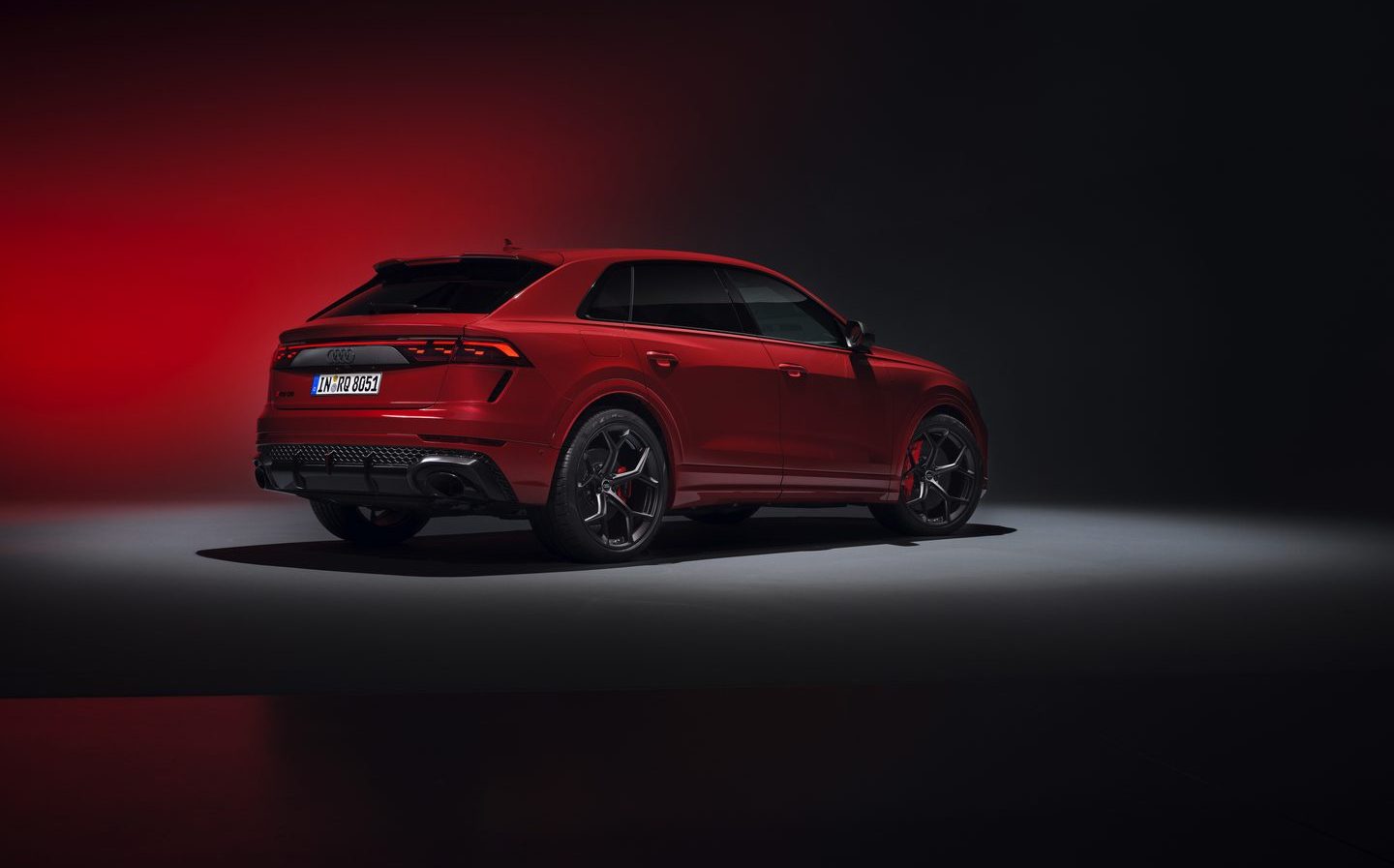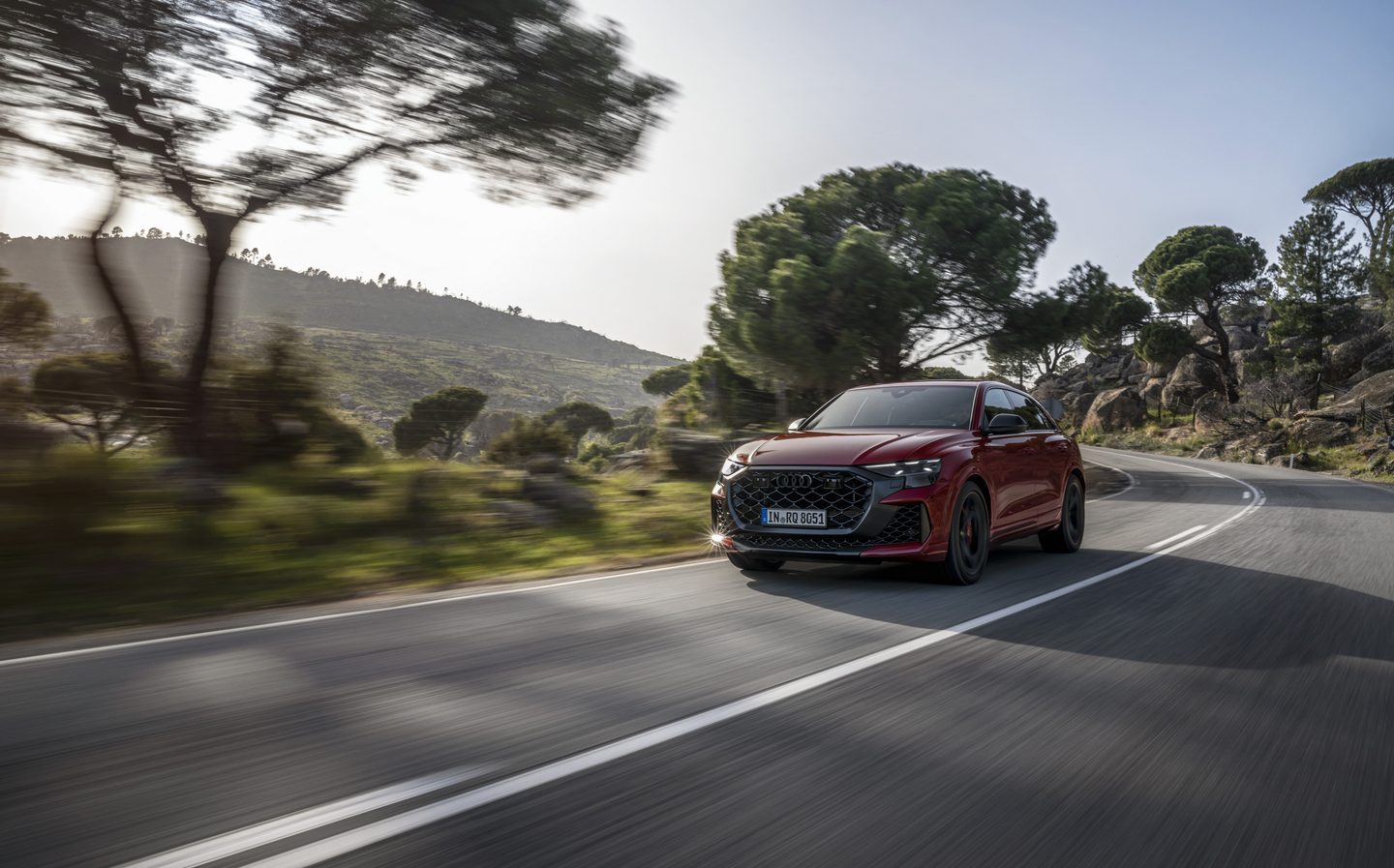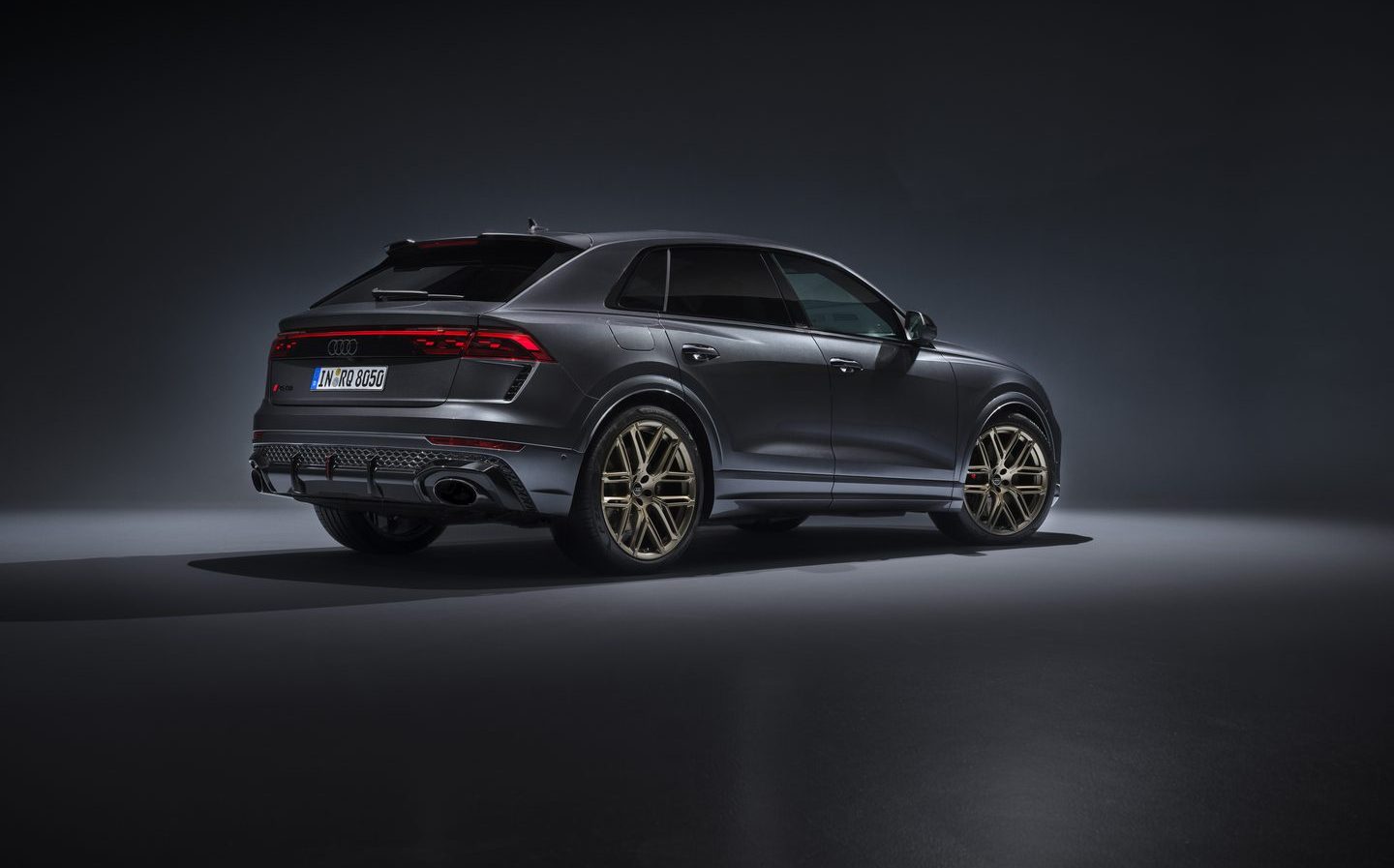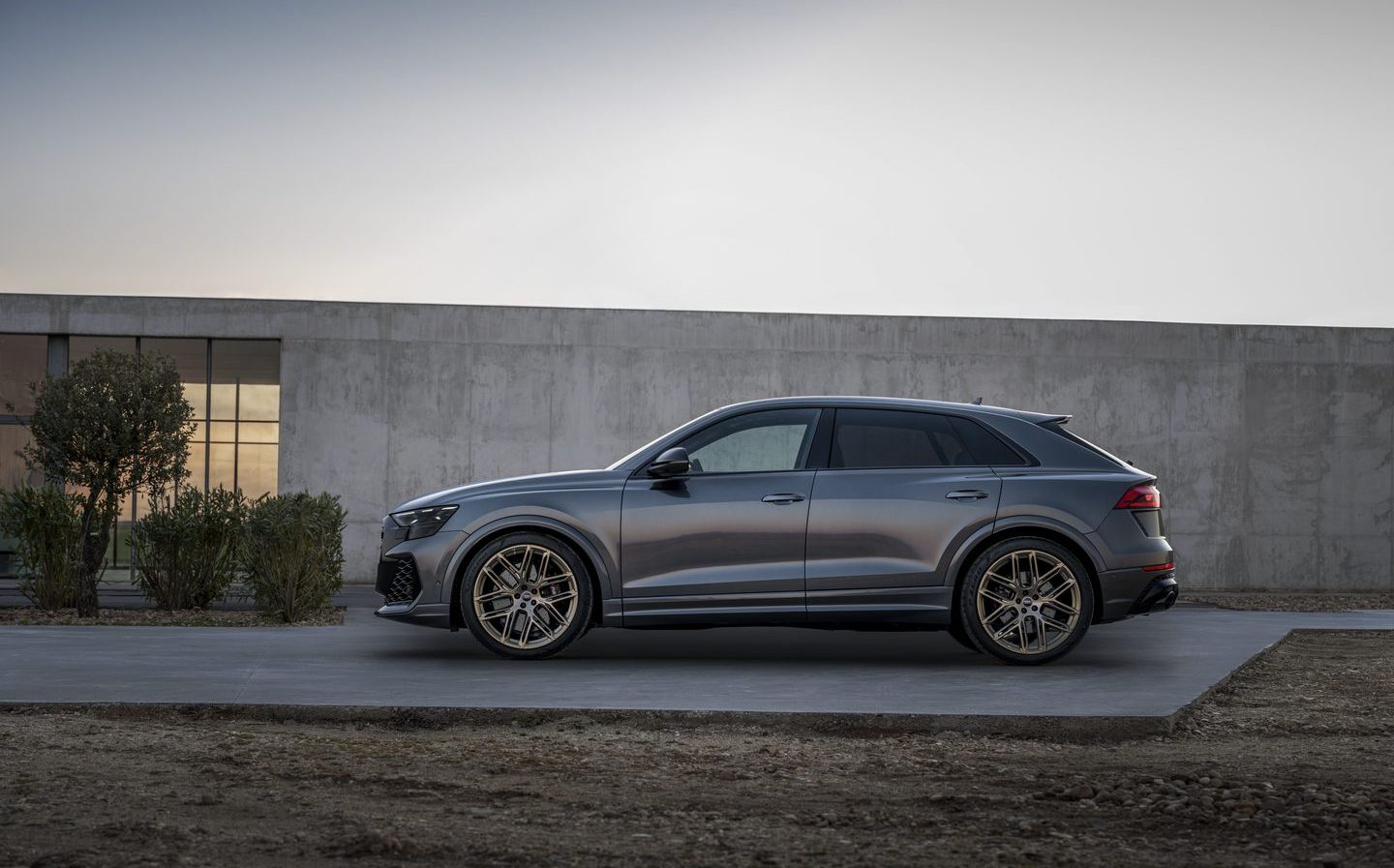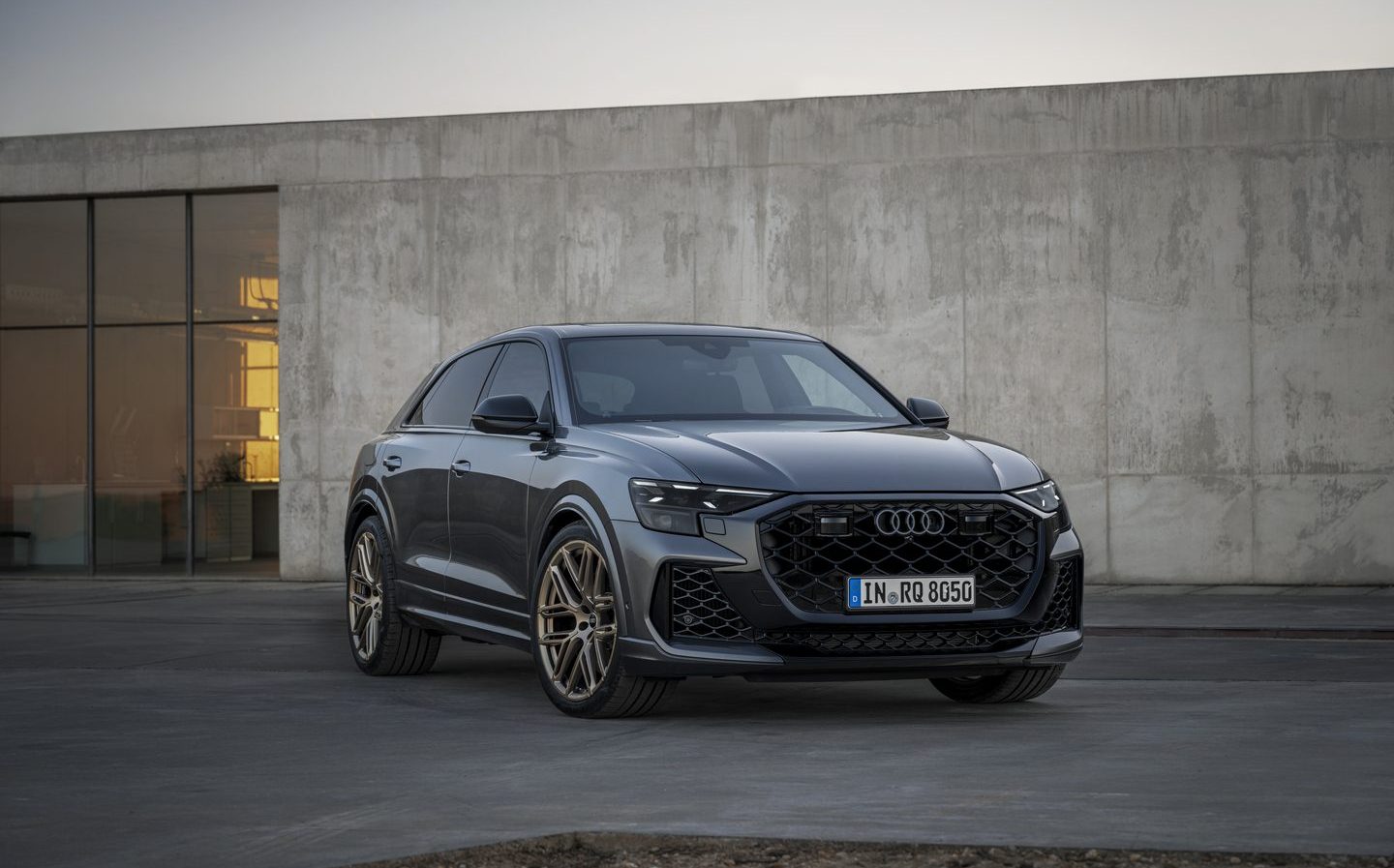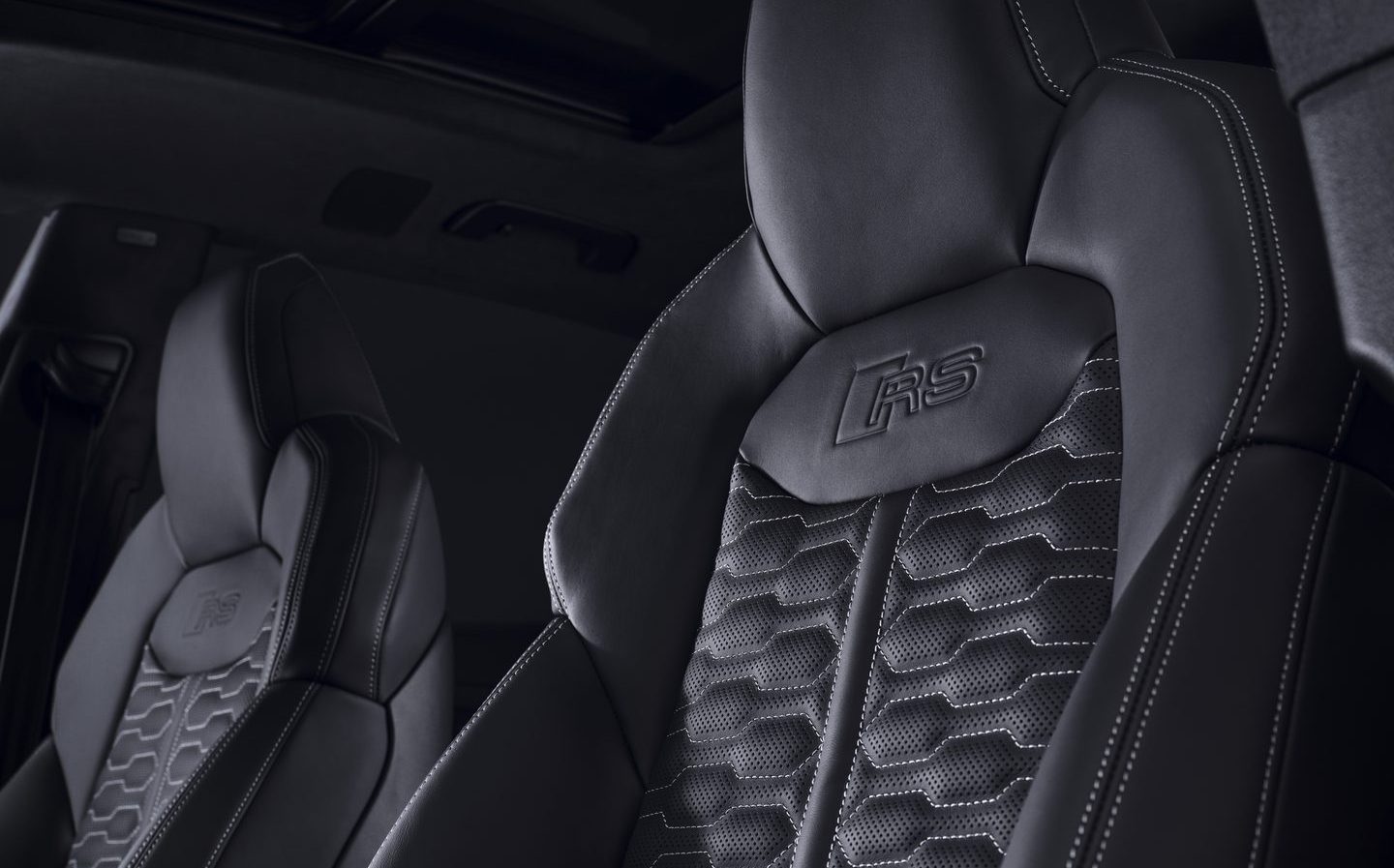New Audi RS Q8 out-muscles Range Rover Sport SV with new 631bhp performance model
It gets new lights too
Audi’s updated high-performance SUV, the RS Q8, is to get a new range-topper called the RS Q8 performance (the lack of a capital “P” being Audi’s decision) offering a Range Rover Sport SV-baiting 631bhp.
Power for the standard and performance versions comes from the twin-turbocharged V8 engine, a 4-litre unit lifted from the Porsche Cayenne Turbo GT, and as with the Porsche it drives all four wheels via an eight-speed automatic gearbox.
But while the base RS Q8 produces 592bhp, the new performance model’s lighter, freer exhaust creates nearly 40bhp on top, which matches the Cayenne Turbo GT and is 5bhp more than its rival from Land Rover. In the Audi, it results in a 0-62mph time of just 3.6 seconds (0.2 seconds faster than the “regular” RS Q8).
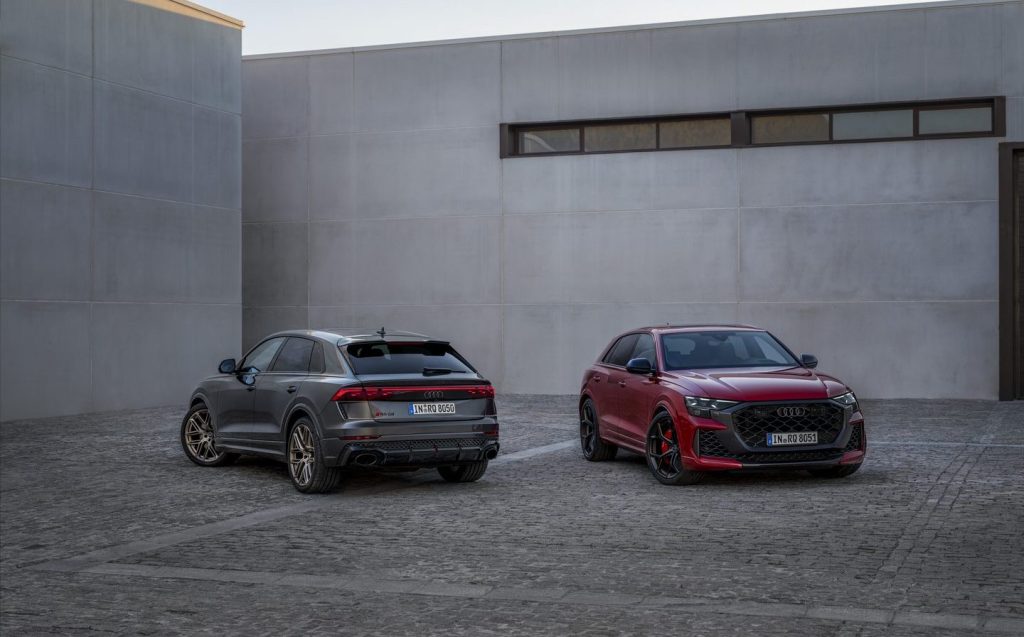
For make sure everyone knows you’re driving the RS Q8 performance version, it is aesthetically distinguished from its less powerful sibling with a matte grey grille and other exterior trim parts (the RS Q8 gets plain black), a bespoke interior (available with blue highlights where the RS Q8 must make do with grey or red) and ceramic brakes as standard, which are an option for the RS Q8.
Optional dynamic package for more speed
By default, the top speed is limited to 155mph. However, it can be optionally increased to 173mph, or if yet-higher speed is a priority, there’s a Dynamic pack which pushes the top speed to an Autobahn-friendly 189mph.
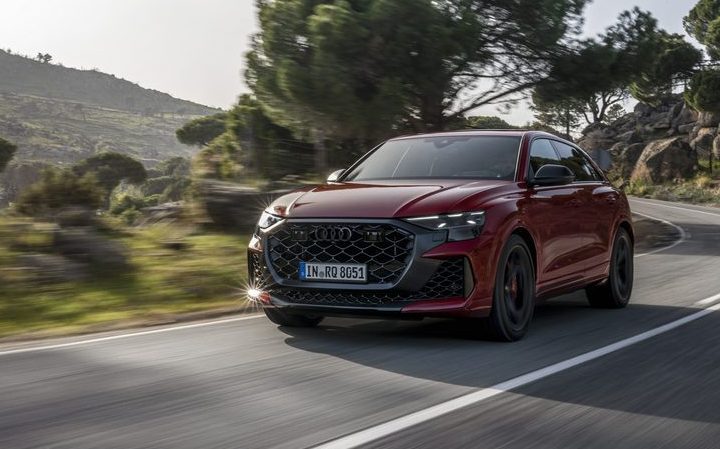
This Dynamic pack adds some other high-performance and handling aids, chief among which is the electromechanical active roll stabilisation package. This is effectively an active anti-roll bar system, and uses a pair of powerful 48-volt electric motors to quickly alter the roll stiffness – resulting in more comfort in a straight line and firm control over body roll when cornering.
Air suspension as standard
The air springs are standard on the RS Q8 and can vary the ride height by as much as 90mm, allowing for extra ground clearance in the extremely unlikely event that anyone ever takes an RS Q8 off-road, and allowing the body to be lowered at high speeds, improving the RS Q8’s aerodynamics.
Its slipperiness through the air is further improved by a large rear diffuser, made of carbon fibre, which is split — just like that of a Formula One car, something Audi will itself be building very shortly — by a bright red reflector.
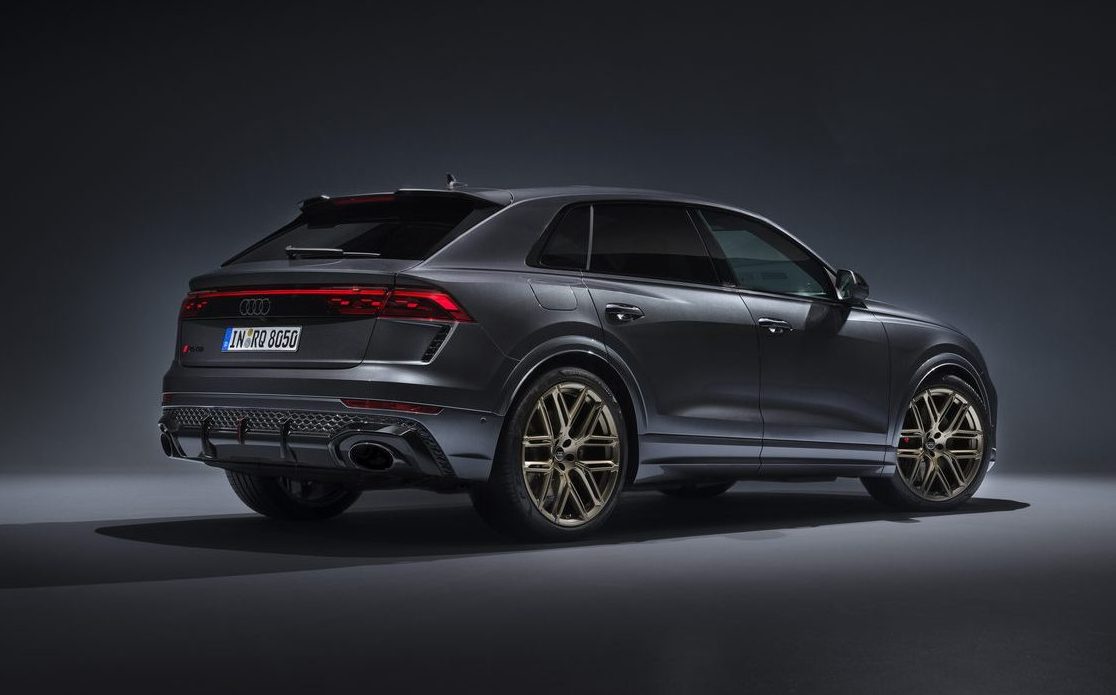
To help with manoeuvring in town, the RS Q8 models both come with rear-wheel steering which can turn the rear wheels by up to five degrees, reducing the turning circle. At higher speeds, the rear wheels can be steered in the same direction as those at the front, making the RS Q8 more stable during lane changes.
Rear-biased torque split
A mechanical centre differential normally splits the engine’s immense power and torque between the front and rear axles in a 40:60 ratio. However, when needed, that ratio can be altered, with the differential sending as much as 70 per cent of power to the front, or up to 85 per cent to the rear wheels. Furthering the rear-wheel-drive feel is the quattro sport differential for the rear axle that comes as part of the Dynamic pack.
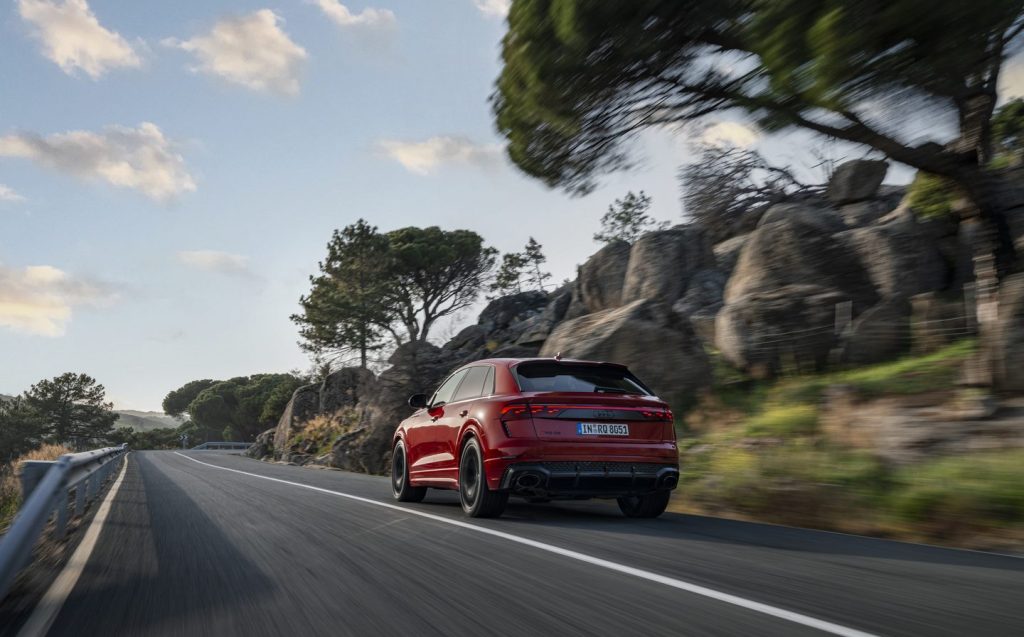
The RS Q8 also comes with Matrix LED headlights (HD Matrix LED lights with laser technology are available as an option) and OLED lights for the rear. These all have patterns and “light signatures” that can be altered to the driver’s liking through the touchscreen in the cabin. The rear lights also have a proximity sensor, which can warn someone behind the RS Q8 that they’re getting too close.
Big wheels, but not necessarily heavier
As standard, the RS Q8 and RS Q8 performance come with 22in, ten-spoke alloy wheels. There are other options, however, including a choice of 23in rim. One set comes with a Y-shaped six-spoke design, but there’s another 23in set of wheels, exclusively for the RS Q8 performance, which uses forging and milling techniques to save as much as 20kg from the car’s overall weight.
These wheels can also be finished in a variety of colours, including burnished metallic black, matte grey, or matte black, and as a further option they can be fitted with high-performance Pirelli P Zero 295/35 tyres.
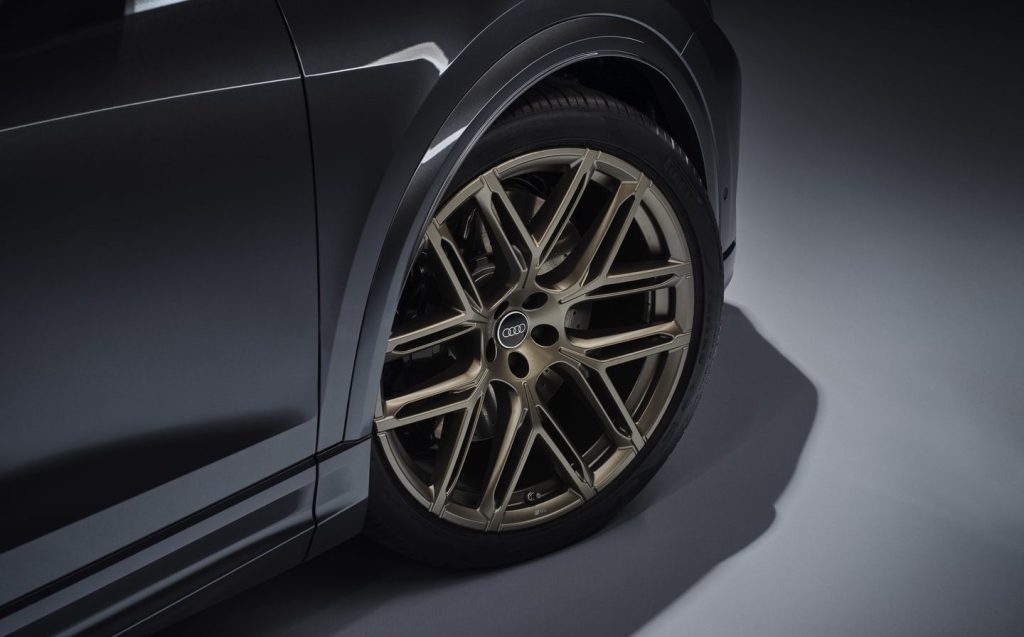
Behind the wheels, as standard, are steel brakes measuring 420mm at the front, with ten-piston calipers, and 370mm at the rear. Optionally, the carbon-ceramic braking setup raises the front brake diameter to 440mm. The brake calipers can be had in a variety of colours.
Customisable cabin
Inside, there are sports front seats finished in perforated leather, and an Alcantara suede rim for the steering wheel. There is a choice of aluminium, carbon fibre, or grey oak trim, and there is “Dinamica” soft-touch microfibre on the gear selector and centre console, which is made from recycled PET bottles. Various design packs add coloured details including centre sections for the seats along with RS logos stitched into the headrests.
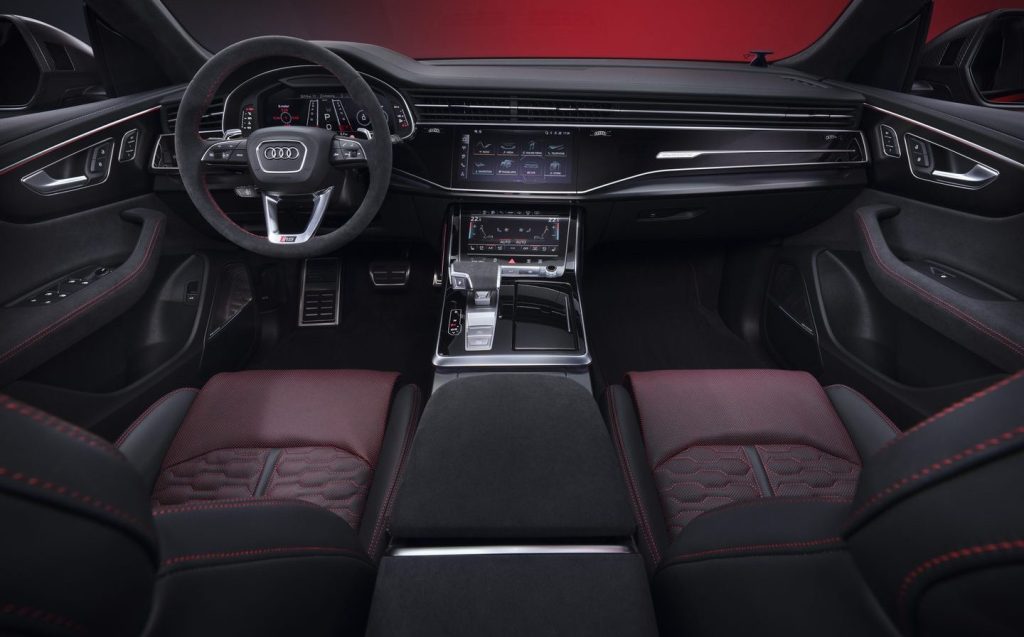
The driver’s digital instrument display also gets a gearshift indicator for when the gearbox is in manual mode using the paddle shifters. Just as in a racing car, it will flash green, yellow and red as the engine’s redline is approached, signalling the need for an up-shift.
UK prices haven’t yet been announced but expect a starting price in the region of £120,000 when the car arrives later in 2024.
Related articles
- If you found news of the updated Audi RS Q8 interesting, you may want to read our review of a prototype of the updated Audi S3
- You might also like to read our review of the BMW M3 Touring
- Have you seen the interior of the 2024 Audi Q6 e-tron?
Latest articles
- Five best electric cars to buy in 2025
- Should I buy a diesel car in 2025?
- F1 2025 calendar and race reports: The new Formula One season as it happens
- Zeekr 7X AWD 2025 review: A fast, spacious and high tech premium SUV — but someone call the chassis chief
- Denza Z9GT 2025 review: Flawed but sleek 1,062bhp shooting brake from BYD’s luxury arm
- Extended test: 2024 Renault Scenic E-Tech review
- Best-selling cars 2025: The UK’s ten most popular models of the year so far
- Audi A6 Avant 2025 review: Trusty executive estate ticks expected boxes, and there’s still a diesel option
- Keir Starmer eases pressure on carmakers to sell EVs in response to ‘global economic headwinds’


